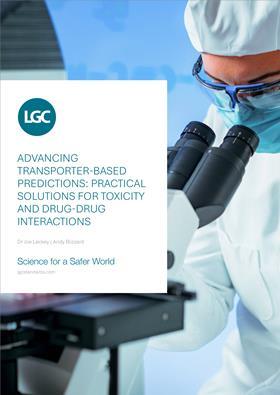Optimise drug discovery: predicting transporter-mediated drug interactions

Learn how in vitro models, biomarkers and modelling can improve prediction of drug interactions and toxicity – reducing false positives and unnecessary clinical studies

False positives in in vitro toxicology and drug-drug interaction (DDI) studies remain a major bottleneck in drug development, leading to unnecessary clinical trials, inflated costs and delayed access to life saving therapies. However, recent advances in transporter science – including validation of biomarkers and next generation in vitro models, combined with modelling techniques – are transforming the landscape.
This free whitepaper from LGC Standards explores how advances in biomarker science can complement in vitro experiments, enhancing predictive reliability and reducing reliance on dedicated DDI studies. The paper also explores how advances in physiologically-based pharmacokinetic modelling (PBPK) can bring your data together to predict transporter-mediated drug disposition, allowing you to create a robust framework for assessing toxicity, evaluating DDIs, and optimising your drug development strategies.
Download now to:
- Recognise the limitations of in vitro models in predicting transporter-mediated DDIs and toxicity
- Explore how transporter biomarkers improve predictive accuracy
- Learn how to apply biomarker data in transporter modelling scenarios
- Understand how PBPK modelling improves prediction of transporter-mediated drug risks
- Align transporter studies with regulatory expectations
Complete the survey below to access the whitepaper.
